*this article was published after the 2023 Trade Deadline
There was little surprise that New York Rangers general manager Chris Drury made a pair of big personnel splashes with an eye on improving his team down the stretch of the most recent regular season and into a likely playoff appearance. The surprise was in the magnitude of the moves Drury pulled off, first completing a major deal three weeks before the March 3 trade deadline, then delivering another much-anticipated bombshell.
Drury grabbed star right wing Vladimir Tarasenko and defenseman Niko Mikkola from the St. Louis Blues for draft picks and players Feb. 9, then added future Hall of Famer Patrick Kane from the Chicago Blackhawks on Feb. 28 in a move that seemed all but impossible after the first blockbuster.
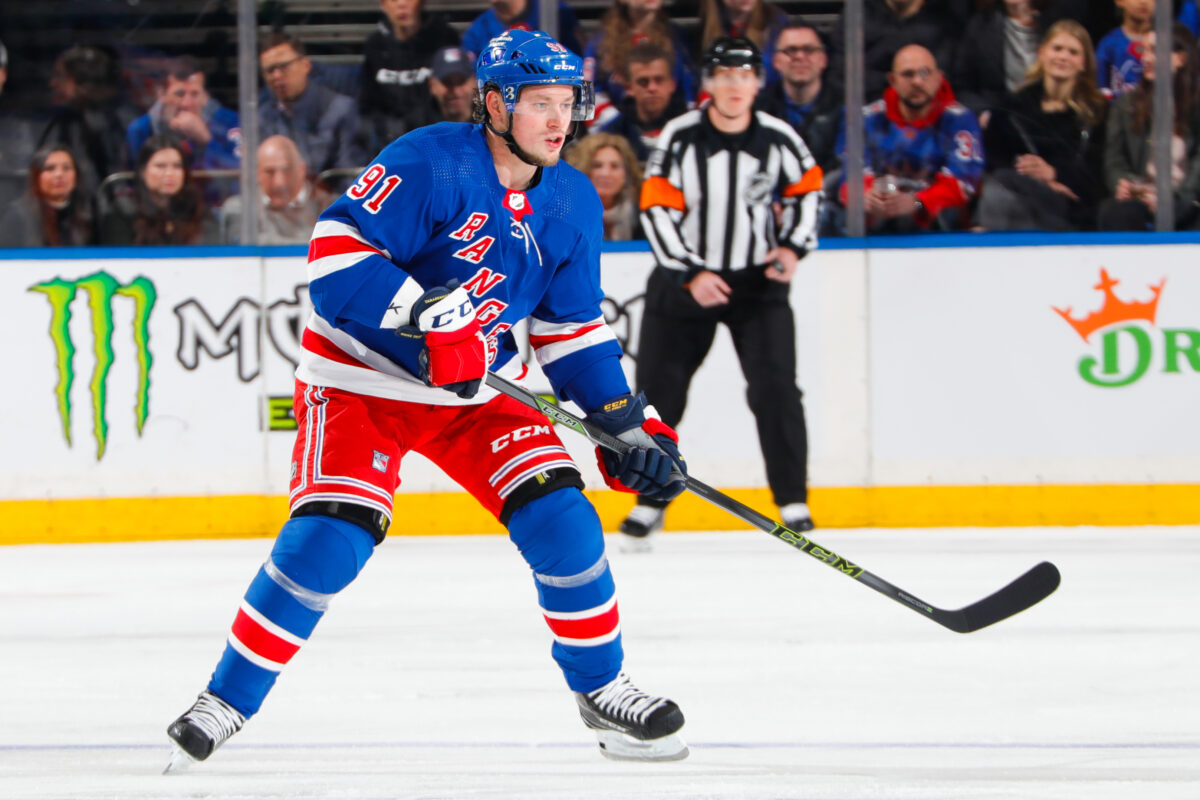
The question is where will these trades rank with Rangers’ pre-deadline deals of recent history? It’s far too early to tell, of course. The gold standard remains the club’s obtaining of forwards Stephane Matteau, Brian Noonan, Glenn Anderson and Craig MacTavish at the 1994 deadline, daring moves that remade the team’s roster and identity and played a critical role in the Blueshirts’ first championship in 54 years.
While no such transactions have resulted in a Stanley Cup since, the Rangers have executed numerous successful trades that have allowed them to come close to another elusive title in the ensuing years. Let’s take a look at the five best trade-deadline pickups by the Rangers since that last Cup, a list Drury and co. hope the Tarasenko-Mikkola and Kane deals will join by this summer.
5. March 1, 2015 – Rangers Acquire D Keith Yandle From Arizona Coyotes
Keith Yandle’s time might be largely forgotten amongst Rangers fans, even though he was more than a rental – Yandle also played the 2015-16 season in a Blueshirt before departing for the Florida Panthers as a free agent. Despite that, the major acquisition for the eventual Presidents’ Trophy winners made an impact as a much-needed puck-moving defenseman upon his arrival in 2015. Yandle recorded two goals, nine assists, a plus-6 rating and 57.1 Corsi for percentage in 21 regular-season games, then added two goals, nine assists, a plus-7 mark and a 58.9 CF% in 19 playoff contests.
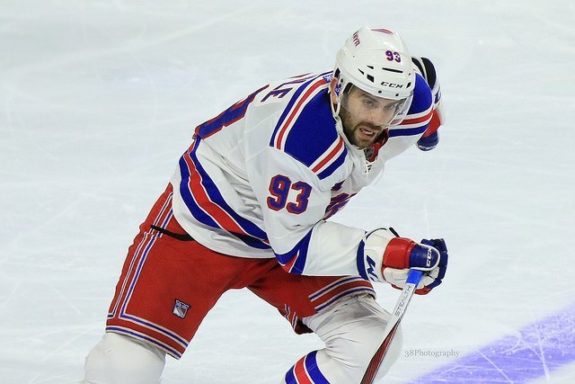
One reason why Yandle’s strong 2015 stint with the Rangers is generally overlooked now? Probably because that Blueshirts team fell short of a Stanley Cup for the second straight season. The crushing disappointment of a five-game loss in the 2014 Cup Final to the Los Angeles Kings was followed in 2015 by a home defeat in Game 7 of the Eastern Conference Final to the Tampa Bay Lightning. The 2014-15 club, which compiled the highest point total in franchise history with 113, marked the end of a window of championship contention for a group that had reached at least the conference final three times in four years.
4. March 23, 1995 – Rangers Acquire F Pat Verbeek From Hartford Whalers
This trade came less than a year after the Rangers’ long-awaited title, with then-general manager Neil Smith angling for a repeat. The Blueshirts hadn’t been anywhere near as dominant that season as the previous one, a result of obvious Stanley Cup hangover and perhaps the truncated 48-game schedule that didn’t start until late January due to a lockout after the expiration of the league’s collective bargaining agreement. A poor start led to an eventual 22-23-3 record under new coach Colin Campbell, but the Rangers were still headed to the playoffs as a No. 8 seed.
That might not have happened, however, had Smith not pulled off a trade for Pat Verbeek, the dimunitive but fiery scoring winger who was cut from the same cloth as current Boston Bruins forward Brad Marchand. Verbeek was instrumental in helping the Blueshirts right the ship after a late-season slump, recording six goals and four assists as the Rangers closed on a 7-4-0 stretch to hold off the Panthers by one point for the final East postseason berth. He totaled 10 goals and five assists in 19 regular-season games after being obtained.
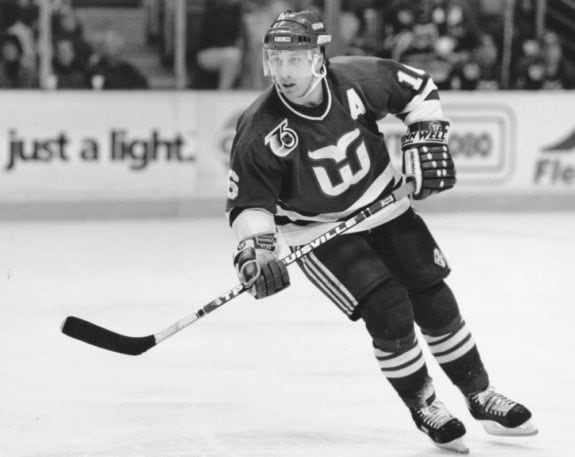
The “Little Ball of Hate” (one of the best NHL nicknames ever) wasn’t done once the Blueshirts made the playoffs, recording two goals and four assists in the Rangers’ six-game upset of the top-seeded Quebec Nordiques in the first round. The Blueshirts were then swept by the Philadelphia Flyers in the second round, but Verbeek had two goals and two assists in the series to give him four goals and six assists in 10 games that postseason.
Verbeek, back with the Rangers the next season, scored 41 goals with 41 assists, and his edgy on-ice persona played a prominent role in shaping the identity of a combative club that recorded 96 points and reached the second round of the playoffs.
3. March 16-21, 2022 – Rangers Acquire Fs Frank Vatrano, Andrew Copp and Tyler Motte and D Justin Braun From Florida Panthers, Winnipeg Jets, Vancouver Canucks, Philadelphia Flyers
Drury, in his first full season as Rangers general manager, showed he possessed the DNA to continue the franchise tradition of shaking up the roster when his team had a chance to go deep in the playoffs – in this case, in quantity, rather than just one noteworthy acquisition. Frank Vatrano, Andrew Copp and Tyler Motte significantly deepened a forward corps that had been top-heavy all season, balancing out the top two lines and strengthening the bottom six. Justin Braun helped settle down a third defensive pair that had been volatile all season, as the veteran joined rookie Braden Schneider to give first-year coach Gerard Gallant a more reliable duo.
Vatrano had eight goals and five assists in 22 regular-season games, and five and eight in 20 playoff contests. Copp totaled 18 points in 16 regular-season games and six goals and eight assists in the postseason, while Motte’s irritating, dynamic play and penalty-killing work brought a much-needed element of edge to the fourth line (which Drury liked so much that he re-acquired Motte before the 2023 deadline).

The fortified, more versatile lineup made it possible for the upstart Rangers, who emerged from a rebuild last season to total 110 points, to advance to within two wins of the Stanley Cup Final.
2. April 3, 2013 – Rangers Acquire Fs Derick Brassard and Derek Dorsett and D John Moore From Columbus Blue Jackets
This trade, somewhat shocking since it cost the Rangers sniper Marian Gaborik (who had fallen out of favor with coach John Tortorella), turned out to be more about the following season’s playoff run than 2013, when the Blueshirts fell in five games to the Boston Bruins in the second round. Yet Derick Brassard, in particular, provided a preview of what was to come that first season in a Blueshirt: He recorded 11 points in 13 regular-season games and then, in his first trip to the postseason, totaled 12 points in 12 contests.
The “Big Game Brass” reputation that Brassard eventually earned grew further in 2014, when after a 45-point regular season, the center had six goals, six assists and a plus-4 rating as the Rangers made their run to the Stanley Cup Final. He was even better in 2014-15, totaling 60 regular-season points and scoring nine goals with seven assists in 19 postseason games while posting a plus-9 mark.
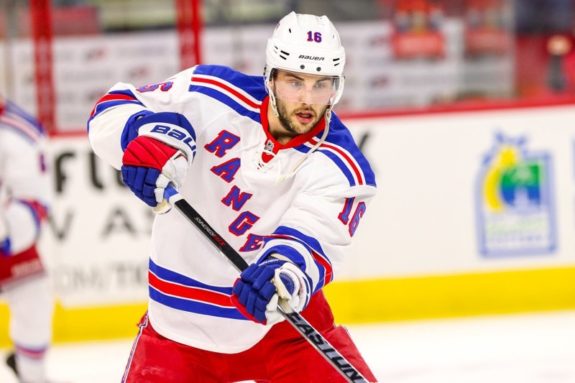
John Moore, after recording six points and a plus-9 rating in 13 games for the Rangers after being acquired in 2013, played 74 regular-season games in 2013-14 and totaled 15 points and a plus-7 mark. Big and mobile, Moore gave the Rangers a strong puck-moving option from the third defense pair during his 21 playoff games that spring, posting a plus-2 rating with 19 blocked shots and 18 hits.
Related: Rangers Re-Acquire Tyler Motte to Again Bolster 4th Line
Derek Dorsett delivered critical physical play and speed during the 2014 postseason, as the two-time NHL penalty-minute leader doled out 56 hits in 23 playoff games, holding down the right-wing spot on a consequential fourth line with Brian Boyle and Dominic Moore.
After his memorable tenure in a Blueshirt, Brassard provided a significant final benefit to the Rangers: He was the principle that went to Ottawa in the lopsided July 18, 2016 trade that brought back eventual star center Mika Zibanejad to Broadway.
1. March 5, 2014 – Rangers Acquire F Martin St. Louis From Tampa Bay Lightning
This trade was not initially popular with Rangers fans, with heart-and-soul captain Ryan Callahan going the other way as the Black-and-Blueshirts identity of the team continued to steadily morph into a more skilled outfit. Martin St. Louis’ early struggles with a new club after 13 years with the Lightning didn’t help matters, as the then-38-year-old managed only one goal and seven assists in 19 regular-season contests after the deadline deal.
Yet the future Hall of Fame sniper re-emerged in the postseason, when St. Louis scored eight goals with seven assists in 25 games. The death of his mother during the Rangers’ second-round series against the Pittsburgh Penguins caused his teammates to rally around him and became a source of inspiration for the remainder of those playoffs, with the Blueshirts going on to overcome a 3-1 series deficit against Pittsburgh before making it to the Stanley Cup Final.
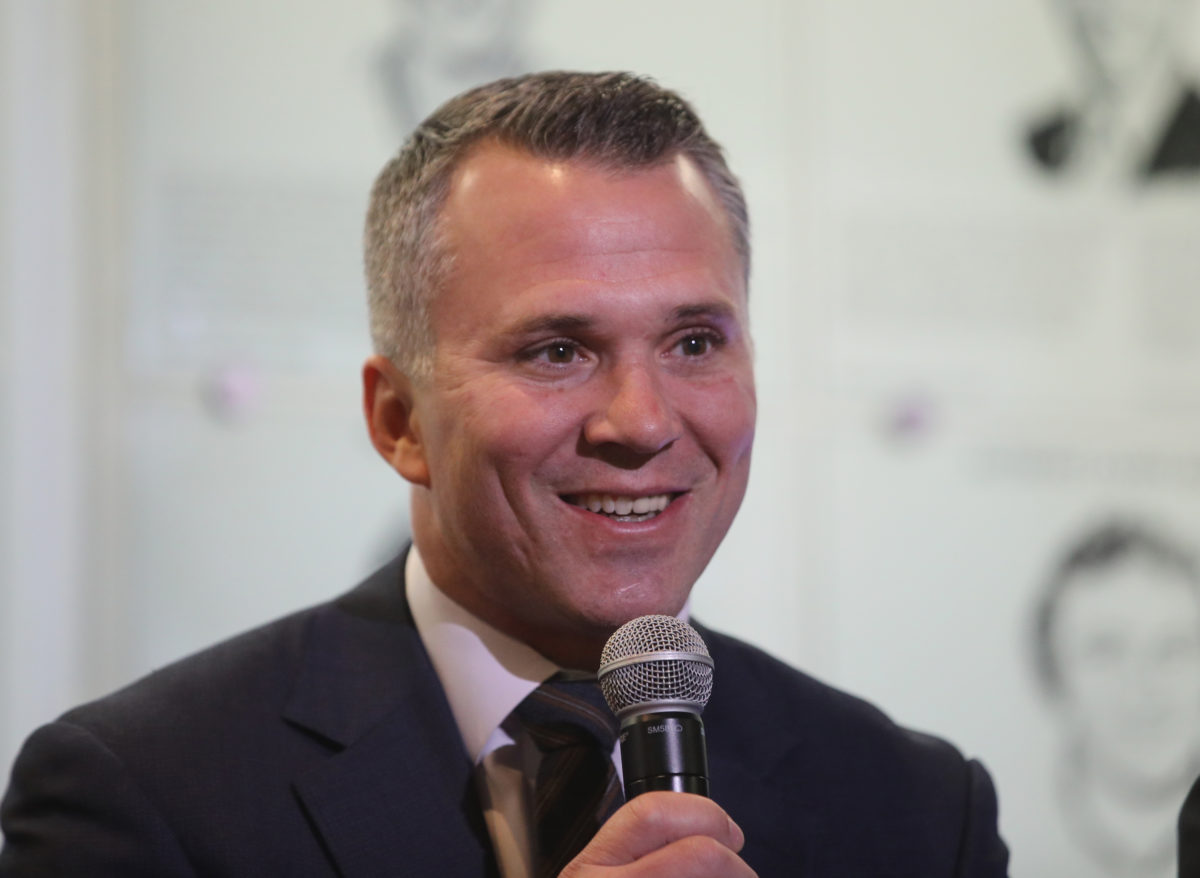
St. Louis would play one more season, recording 52 points in 74 games for the Rangers. His final career game, however, had to sting – a 2-0 loss to Tampa Bay, his former team, in Game 7 of the Eastern Conference Final.
Rangers’ Bold and Successful Deadline Moves Since 1994 Haven’t Brought a Cup
There seems little doubt that the legacy of the championship acquisitions of 1994 has inspired Rangers general managers to act boldly around the trade deadline ever since. Smith’s stunning swaps of nearly 30 years ago transformed that club from a very good regular-season team to a more playoff-ready one, bolstered to battle through the NHL postseason gauntlet and eventually to a long-awaited parade down the Canyon of Heroes.
Drury, like the GMs that came before him and after Smith, has signaled in two seasons that he’ll be no different from his predecessors. His pickups of 2022 were nearly enough for the Rangers to reach the Cup Final, and were obtained without having to gut the organization’s future. The same can be said about the price of both the Tarasenko-Mikkola and Kane trades, with Drury still in possession of his 2023 first-round pick and all of the team’s top prospects.
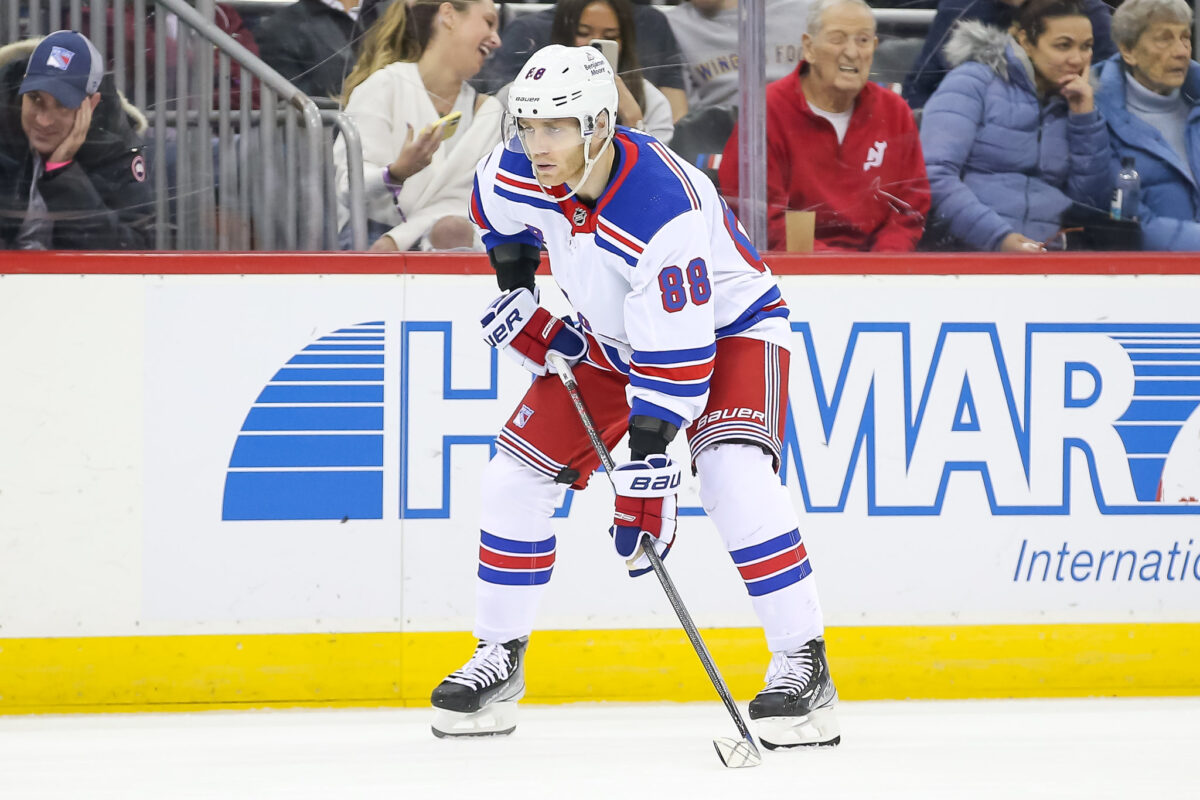
As impressive as Drury’s work was in bringing in the two superstar forwards and Mikkola, there’s no question that the audacious acquisitions won’t leap to the top of this list unless they finally bring the Rangers another Stanley Cup.
